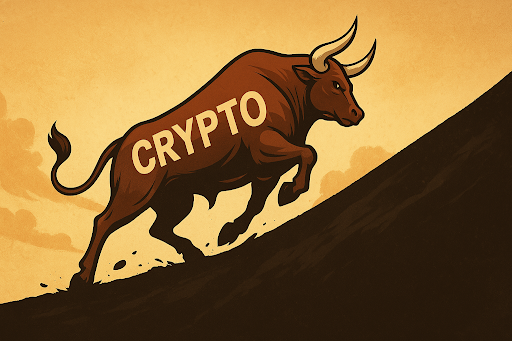Bitcoin (BTC -0.61%) has a market capitalization of $2.1 trillion, making it the world's largest cryptocurrency by a wide margin. In fact, it accounts for more than half of the value of all coins and tokens in circulation, which stands at $3.4 trillion as of this writing (June 14).
A single Bitcoin currently trades for $105,000, but in an interview with Bloomberg last week, MicroStrategy (MSTR -0.22%) co-founder Michael Saylor said $1 million might be in the cards in the next 10 years. While that sounds ambitious, it isn't even his most bullish prediction. He also maintains a long-term forecast that suggests the cryptocurrency could reach $13 million by the year 2045.
If Saylor is right, investors who buy Bitcoin today could earn a staggering 12,280% return over the next 20 years. But how realistic is his target?

Image source: Getty Images.
Reshaping the financial system
Bitcoin is a unique asset that investors increasingly view as a legitimate store of value. It's completely decentralized, so it can't be controlled by any person, company, or government. It also has a capped supply of 21 million coins, and it's built on a secure system of record called the blockchain, where transactions can be publicly verified.
Michael Saylor thinks society would benefit from "tokenizing" every asset in the world onto a blockchain, as it would introduce transparency and solve inefficiencies in the current system. For example, there is no centralized database of private equity or real estate holdings in the U.S., which is why transactions often involve lengthy due diligence processes and incur steep legal costs.
Saylor believes Bitcoin is the perfect reserve asset for the tokenization process due to its decentralized nature. In other words, it would be the currency everyone uses when buying, selling, and transferring tokenized assets, so owning Bitcoin would be a necessity for everyone who wants to participate in the global financial system.
Saylor also thinks the current U.S. government could lay the groundwork for this new system, as President Donald Trump is arguably the most pro-crypto president in history. Trump has recruited several key personnel who share his enthusiasm for the industry, including Paul Atkins, who is now the chairman of the Securities and Exchange Commission (SEC).
Saylor says the first step is to create a digital assets framework to outline a clear set of rules and laws, which could encourage other countries to follow suit. With full global cooperation, he believes the world's $500 trillion in total assets can be moved onto the blockchain by 2045, which would drive the price of a single Bitcoin to $13 million.
Saylor's target implies a mind-boggling valuation
As I mentioned at the top, Bitcoin has a market capitalization of $2.1 trillion as of this writing. If its price rose to $13 million, its fully diluted market cap would balloon to an eye-popping $273 trillion (based on its capped supply of 21 million coins).
That means Bitcoin would be worth almost 6 times more than the entire S&P 500 (^GSPC 0.94%) stock market index, which is home to 500 companies with a combined market cap of $47.5 trillion. It would also be worth 9 times more than the annual output of the entire U.S. economy, which was $29.7 trillion last year.
As a result, I think Saylor's target is unrealistic. Not to mention, convincing every government in the world to endorse tokenization and adopt Bitcoin will face significant social and political resistance. Every economy operates at a different speed, which is why the currency of each nation is valued differently. A weaker currency, for example, makes the exports of smaller countries appear more attractive, which helps them compete on the global stage.
If every nation adopted Bitcoin, smaller countries would be forced onto a level playing field with economic powerhouses like the U.S. and China, where they would struggle to maintain their appeal as trading partners or as destinations for investment.
Plus, floating-rate fiat currencies can help countries absorb economic shocks. When citizens of the United Kingdom voted to leave the European Union in 2016, the British pound rapidly lost around 20% of its value relative to the U.S. dollar, which compensated for a potential economic slowdown by making British exports cheaper for foreign buyers. If the United Kingdom had adopted Bitcoin along with the rest of the world, it might have faced a prolonged recession.
Bitcoin may still be a buy
Although I think Michael Saylor's $13 million price target is unrealistic, it doesn't mean Bitcoin is a terrible investment. It's technically a scarce asset due to its fixed supply, which is a key reason why a growing number of investors view it as a good store of value -- kind of like a digital version of gold.
The total value of all above-ground gold reserves currently stands at $23.1 trillion, so Bitcoin's market cap would have to climb tenfold to match. That implies a potential price-per-coin of $1.1 million, so Saylor's shorter-term target of $1 million might actually be achievable.
Still, it's important for investors to remember that Bitcoin is a speculative asset. It doesn't produce any revenue or earnings, so its value can only be realistically tied to what the next person is willing to pay (which is always an unknown). Plus, Michael Saylor's company, MicroStrategy, owns 582,000 Bitcoin worth $60 billion, so he has a vested interest in issuing bullish forecasts.
Anthony Di Pizio has no position in any of the stocks mentioned. The Motley Fool has positions in and recommends Bitcoin. The Motley Fool has a disclosure policy.







 English (US) ·
English (US) ·